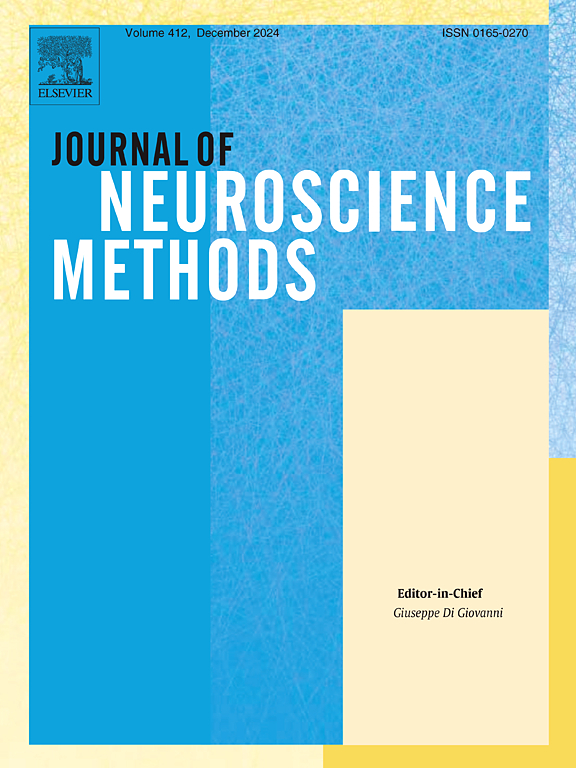使振荡检测更加稳健。
IF 2.7
4区 医学
Q2 BIOCHEMICAL RESEARCH METHODS
引用次数: 0
摘要
背景:神经振荡对理解认知功能很重要。为了量化它们,某些方法,包括更好的振荡检测(BOSC),将振荡活动与非振荡1/f背景活动区分开来,并推导检测阈值,以忽略大多数背景信号。如果成功,这将产生跨频率相当校准的检测标准。然而,如果背景估计不一致,这可能会适得其反,并可能引入频率偏差。新方法:优化后的BOSC方法在与标准BOSC方法进行比较之前,分别进行了单独测试和组合测试,并纳入了多项改进。所讨论的改进是:去除跨频率的高功率值,使用中位数而不是平均功率值,以及稳健回归。结果:新的BOSC方法在使用较短的时间窗和在测量光谱的一端存在大量功率时表现出更好的性能。合成信号的使用进一步证明了新方法的通用性和局限性。与现有方法的比较:除了一些极端情况外,标准BOSC方法表现相当好。结果表明,在非常短的时间窗口,或者当伪影或功率谱不平衡是一个问题时,优化的BOSC方法可以产生更有选择性的拟合,显示出与彩色噪声背景信号更大的一致性。结论:标准BOSC方法在许多典型情况下表现良好,但优化版本适用于不太常规的情况,并解决了标准方法在这些情况下的许多缺点。本文章由计算机程序翻译,如有差异,请以英文原文为准。
Making oscillation detection more robust
Background:
Neural oscillations are important for understanding cognitive functions. To quantify them, certain methods, including Better OSCillation detection (BOSC), distinguish oscillatory activity from non-oscillatory 1/f background activity and derive detection thresholds in order to disregard most background signal. When successful, this produces detection criteria that are fairly calibrated across frequencies. However, if the background estimate is misaligned, this can backfire and potentially introduce a frequency bias.
New method:
The optimized BOSC method incorporates several improvements after testing each independently and as combinations before comparing them all together with the standard BOSC method. The improvements in question are: removing high-power values across frequencies, using median rather than mean power values, and robust regression.
Results:
The new BOSC method showed enhanced performance when using shorter time windows and when substantial power existed at one end of the measured spectrum. Synthetic signals were used to demonstrate further versatility and the limitations of the new method.
Comparison with existing methods:
The standard BOSC method fared reasonably well aside from some extreme edge cases. Outcomes suggested that at very short time windows, or when artifacts or lopsided power spectra are a concern, the optimized BOSC method could result in a more selective fit that shows greater alignment with the colored-noise background signal.
Conclusion:
The standard BOSC method performs well in many typical scenarios, but the optimized version is ideal for less conventional scenarios and addresses many of the shortcomings of the standard method in these cases.
求助全文
通过发布文献求助,成功后即可免费获取论文全文。
去求助
来源期刊

Journal of Neuroscience Methods
医学-神经科学
CiteScore
7.10
自引率
3.30%
发文量
226
审稿时长
52 days
期刊介绍:
The Journal of Neuroscience Methods publishes papers that describe new methods that are specifically for neuroscience research conducted in invertebrates, vertebrates or in man. Major methodological improvements or important refinements of established neuroscience methods are also considered for publication. The Journal''s Scope includes all aspects of contemporary neuroscience research, including anatomical, behavioural, biochemical, cellular, computational, molecular, invasive and non-invasive imaging, optogenetic, and physiological research investigations.
 求助内容:
求助内容: 应助结果提醒方式:
应助结果提醒方式:


